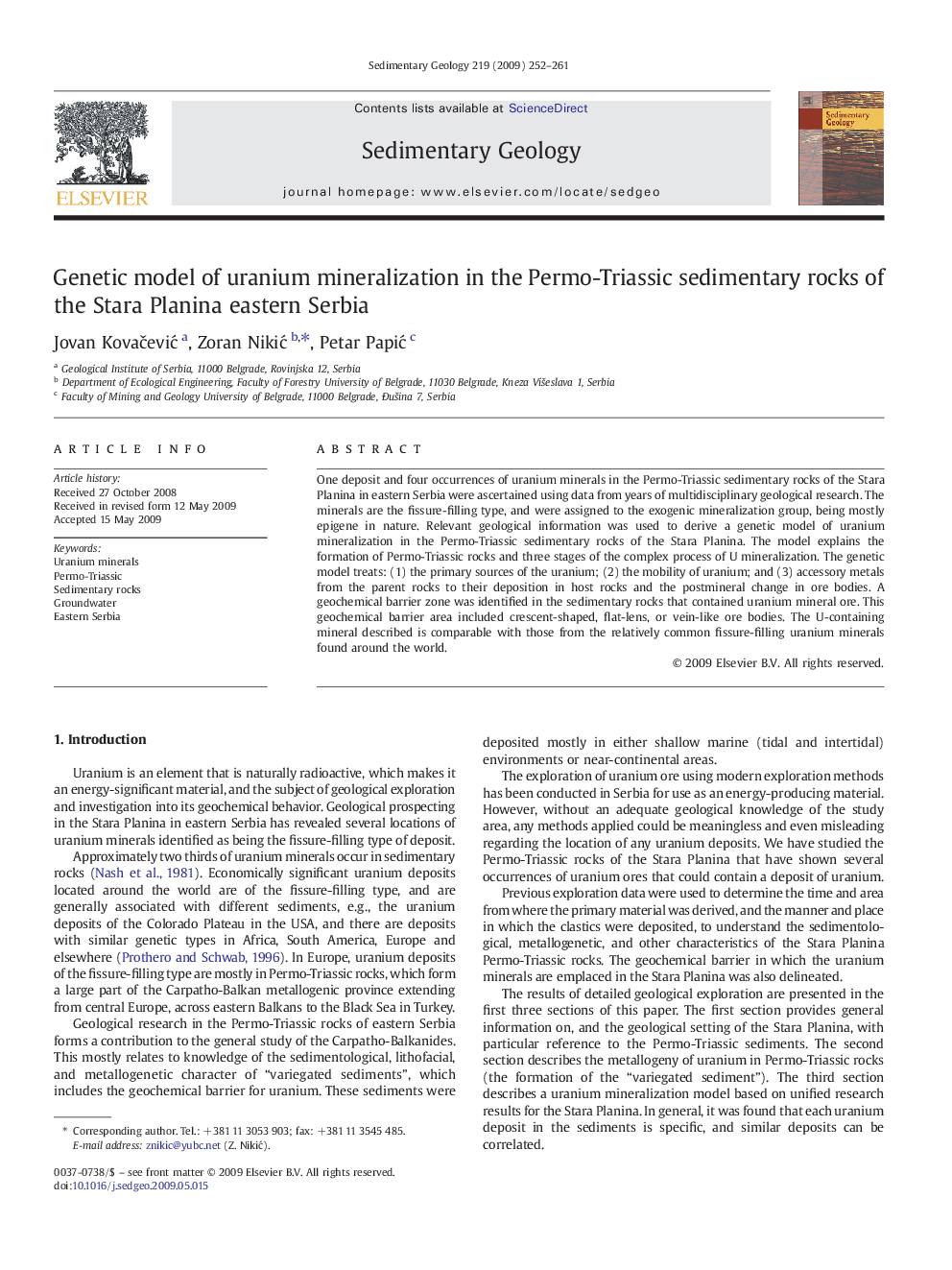| Article ID | Journal | Published Year | Pages | File Type |
|---|---|---|---|---|
| 4690403 | Sedimentary Geology | 2009 | 10 Pages |
One deposit and four occurrences of uranium minerals in the Permo-Triassic sedimentary rocks of the Stara Planina in eastern Serbia were ascertained using data from years of multidisciplinary geological research. The minerals are the fissure-filling type, and were assigned to the exogenic mineralization group, being mostly epigene in nature. Relevant geological information was used to derive a genetic model of uranium mineralization in the Permo-Triassic sedimentary rocks of the Stara Planina. The model explains the formation of Permo-Triassic rocks and three stages of the complex process of U mineralization. The genetic model treats: (1) the primary sources of the uranium; (2) the mobility of uranium; and (3) accessory metals from the parent rocks to their deposition in host rocks and the postmineral change in ore bodies. A geochemical barrier zone was identified in the sedimentary rocks that contained uranium mineral ore. This geochemical barrier area included crescent-shaped, flat-lens, or vein-like ore bodies. The U-containing mineral described is comparable with those from the relatively common fissure-filling uranium minerals found around the world.
